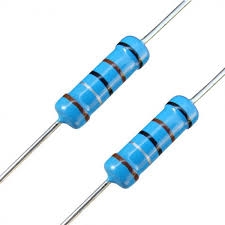Kirchhoff's law
Two resistors with 100 Ω and 300 Ω resistors are connected in series. A current of 1.8 A passes through the first 100Ω resistor. What current flows through the second resistor?
Final Answer:

You need to know the following knowledge to solve this word math problem:
themes, topicsGrade of the word problem
Related math problems and questions:
- Resistances 25271
 Three resistors with resistances of 200 Ω, 400 Ω, and 600 Ω are connected in series (in series)—a current of 1.8 A flows through the first 200Ω resistor. a) What current passes through the second and what current through the third resistor? b) What are th
Three resistors with resistances of 200 Ω, 400 Ω, and 600 Ω are connected in series (in series)—a current of 1.8 A flows through the first 200Ω resistor. a) What current passes through the second and what current through the third resistor? b) What are th - Resistances 25281
 Three resistors with resistances of 200 Ω, 400 Ω, and 600 Ω are connected next to each other (parallel). A current of 1.8 A flows through the first 200Ω resistor. a) What current passes through the second and what current through the third resistor? b) Wh
Three resistors with resistances of 200 Ω, 400 Ω, and 600 Ω are connected next to each other (parallel). A current of 1.8 A flows through the first 200Ω resistor. a) What current passes through the second and what current through the third resistor? b) Wh - Two resistors 5
 Two resistors are connected in parallel. The first resistor has a resistance of 2000 ohms and a current of 4 mA flows through it. The second resistor has a resistance of 1600 ohms. 1/Draw a circuit diagram 2/Determine the voltage of the power source. 3/Wh
Two resistors are connected in parallel. The first resistor has a resistance of 2000 ohms and a current of 4 mA flows through it. The second resistor has a resistance of 1600 ohms. 1/Draw a circuit diagram 2/Determine the voltage of the power source. 3/Wh - A charge
 A charge of 9 C passes through series-connected resistors with resistances of 40 ohms and 60 ohms in 1 minute. a) What voltage are they connected to? b) Calculate the voltage across each resistor.
A charge of 9 C passes through series-connected resistors with resistances of 40 ohms and 60 ohms in 1 minute. a) What voltage are they connected to? b) Calculate the voltage across each resistor. - Resistances 80604
 Resistors with resistances of 6 ohms and 10 ohms are connected in series to a voltage of 24 V. a) How much current passes through them? b) What are the voltages on the individual resistors?
Resistors with resistances of 6 ohms and 10 ohms are connected in series to a voltage of 24 V. a) How much current passes through them? b) What are the voltages on the individual resistors? - R1+R2 in parallel
 The resistance ratio of the first and second resistors is 3:1, and the current flowing through the first resistor is 300 mA. What current flows through the second resistor (resistors connected in parallel)?
The resistance ratio of the first and second resistors is 3:1, and the current flowing through the first resistor is 300 mA. What current flows through the second resistor (resistors connected in parallel)? - Calculate 80467
 Calculate the current I that would race through resistor R5 (720 ohms), resistor R2 (220 ohms), and an LED (U=2V) at a DC 6V source. The resistors are connected in series.
Calculate the current I that would race through resistor R5 (720 ohms), resistor R2 (220 ohms), and an LED (U=2V) at a DC 6V source. The resistors are connected in series.
